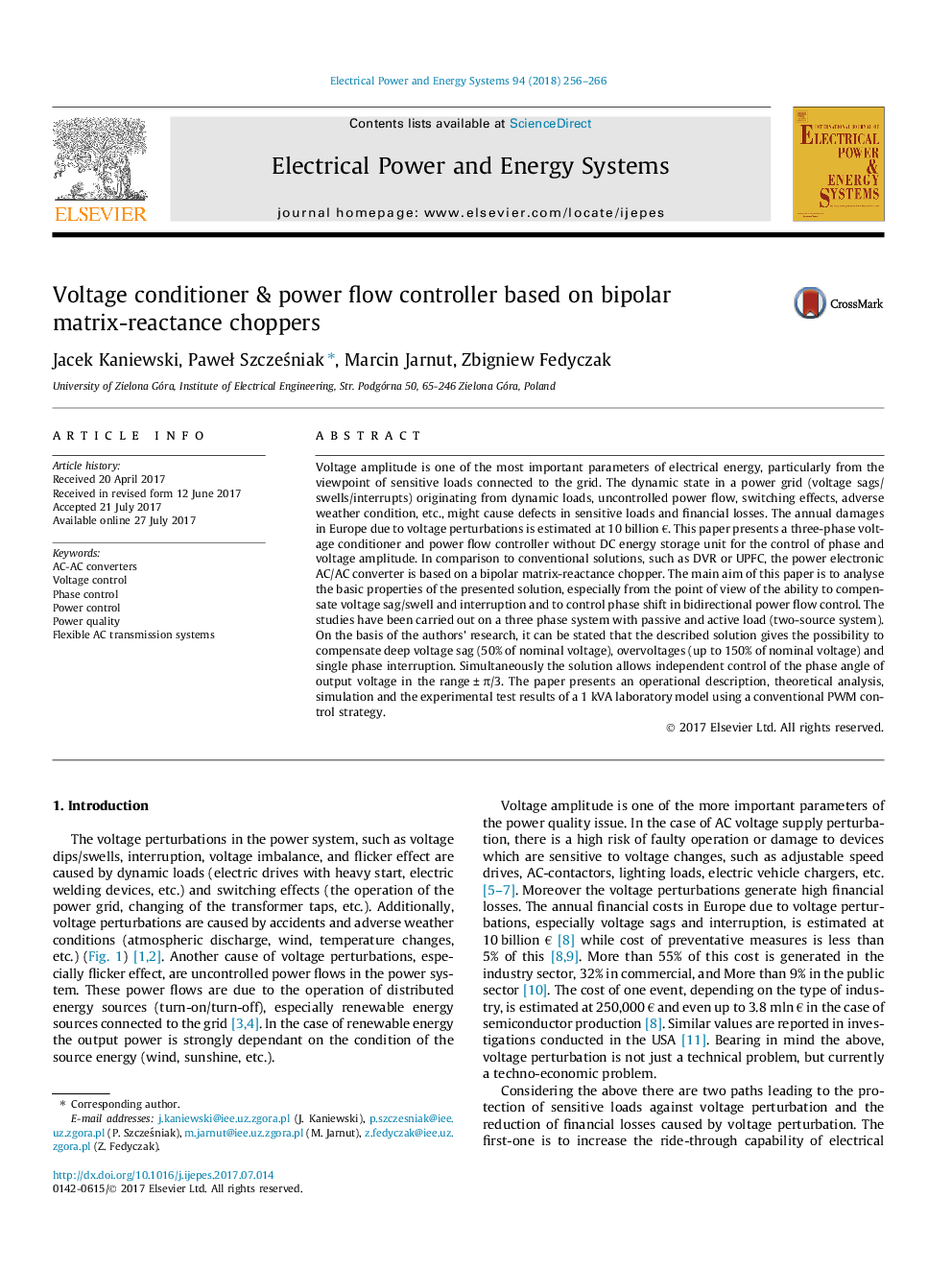| کد مقاله | کد نشریه | سال انتشار | مقاله انگلیسی | نسخه تمام متن |
|---|---|---|---|---|
| 4945593 | 1438706 | 2018 | 11 صفحه PDF | دانلود رایگان |
- Presented topology is based on Bipolar Matrix-Reactance Choppers.
- Averaged model of considered topology is shown.
- The theoretical analysis, simulation and experimental investigation are shown.
- Discussion on the understanding, development and control of such systems is presented.
Voltage amplitude is one of the most important parameters of electrical energy, particularly from the viewpoint of sensitive loads connected to the grid. The dynamic state in a power grid (voltage sags/swells/interrupts) originating from dynamic loads, uncontrolled power flow, switching effects, adverse weather condition, etc., might cause defects in sensitive loads and financial losses. The annual damages in Europe due to voltage perturbations is estimated at 10 billion â¬. This paper presents a three-phase voltage conditioner and power flow controller without DC energy storage unit for the control of phase and voltage amplitude. In comparison to conventional solutions, such as DVR or UPFC, the power electronic AC/AC converter is based on a bipolar matrix-reactance chopper. The main aim of this paper is to analyse the basic properties of the presented solution, especially from the point of view of the ability to compensate voltage sag/swell and interruption and to control phase shift in bidirectional power flow control. The studies have been carried out on a three phase system with passive and active load (two-source system). On the basis of the authors' research, it can be stated that the described solution gives the possibility to compensate deep voltage sag (50% of nominal voltage), overvoltages (up to 150% of nominal voltage) and single phase interruption. Simultaneously the solution allows independent control of the phase angle of output voltage in the range ± Ï/3. The paper presents an operational description, theoretical analysis, simulation and the experimental test results of a 1 kVA laboratory model using a conventional PWM control strategy.
Journal: International Journal of Electrical Power & Energy Systems - Volume 94, January 2018, Pages 256-266
